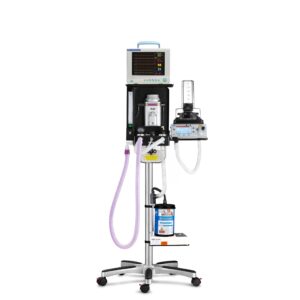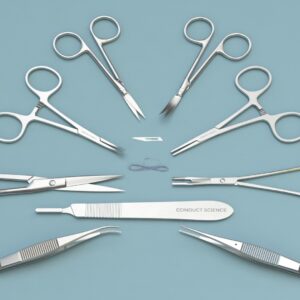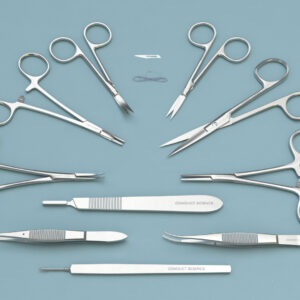$220.00 – $420.00



The Miller laryngoscope is the most widely used straight laryngoscope blade for the visualization of the larynx. Robert A. Miller introduced the Miller blade in 1941 as endotracheal intubation began to be a common practice. His design overcame the issues of then commonly used laryngoscope blades. The Miller blades are longer, rounded at the bottom, smaller at the tip, and have an extra curve starting two inches from the end. These blades are commonly used for infants as it is easier to visualize the glottis due to the relatively larger size of the epiglottis in relation to the glottis. Laryngoscopy using the Miller blade is performed by positioning the blade posterior to the epiglottis to expose the glottis and vocal folds.
The Miller blades may be more useful than MacIntosh blades in subjects with short, thick necks, higher position of larynxes in the neck, big tongue or those that are obese. The Miller blades are available starting size 0 to size 5.
Pre-laryngoscopy Preparations
Pre-anesthesia fasting of 8 to 12 hours is required in larger animals to minimize the risk of vomiting during induction or recovery from anesthesia. In smaller animals this step is unnecessary. However, guinea pigs may retain food in their pharynx. If this phenomenon is observed in a significant number of subjects (guinea pigs) then fasting them for 3 to 4 hours before anesthesia may be sufficient. Pre-anesthesia tests should also be performed to assess the subject’s health status and age.
Laryngoscopy can be performed in lightly anesthetized subjects; however, it is recommended that this method only be used once proficiency in the technique has been achieved. Before intubating, the subject should be administered oxygen for about 2 minutes as a preemptive measure to slow down the onset of hypoxia that could arise from the inadvertently obstructed larynx. Although laryngoscopy can be performed as an emergency diagnostic tool before surgical correction, it is most effectively performed in stable subjects.
Cleaning Procedure
Remove blade from the handle and tighten bulb before rinsing the blade under cool running tap water to remove all visible soil. Scrub the blade thoroughly using a soft bristle blade after soaking the blades in an enzymatic detergent. Wash once again under cool running tap water to remove residual detergent. Dry the blade using a clean lint-free cloth.
Skeletal and soft tissue factors of the subjects may affect the visibility of the line of sight of the larynx. Improper usage of the blade can result in trauma to soft tissues and damage frontal teeth. When selecting blade size, consider the weight of the subject. Always test the laryngoscope blades and handles after cleaning, disinfection, sterilization and before usage. Since the handles of the blades also serve as counterbalance an appropriate size of the handle should be selected to match the blade size used.
Robert A. Miller (1941). “A new laryngoscope”. Anesthesiology. 2 (3): 317–20. doi:10.1097/00000542-194105000-00008.
| Light Source | Bulb, Fiberoptic |
|---|---|
| Brand | RWD |
You must be logged in to post a review.
There are no questions yet. Be the first to ask a question about this product.
Monday – Friday
9 AM – 5 PM EST
DISCLAIMER: ConductScience and affiliate products are NOT designed for human consumption, testing, or clinical utilization. They are designed for pre-clinical utilization only. Customers purchasing apparatus for the purposes of scientific research or veterinary care affirm adherence to applicable regulatory bodies for the country in which their research or care is conducted.
Reviews
There are no reviews yet.